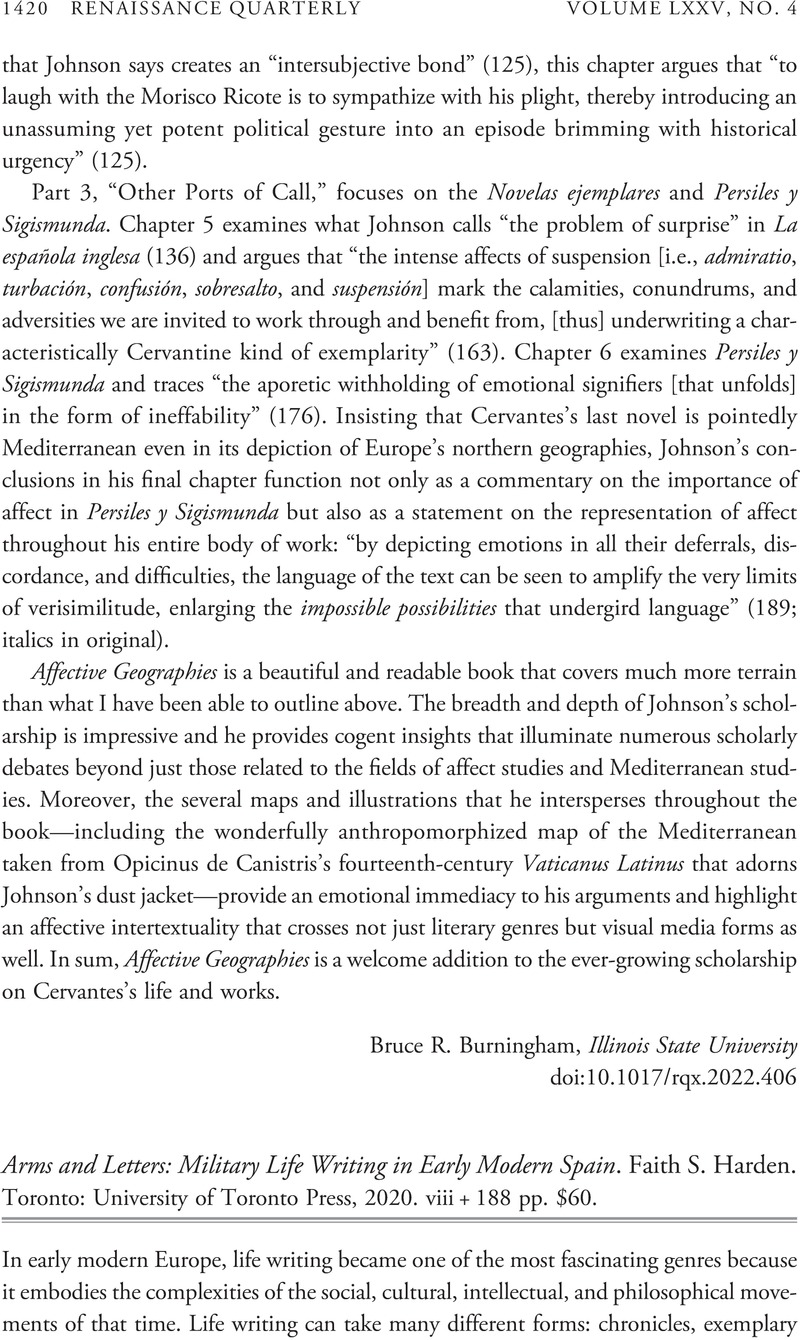No CrossRef data available.
Article contents
Arms and Letters: Military Life Writing in Early Modern Spain. Faith S. Harden. Toronto: University of Toronto Press, 2020. viii + 188 pp. $60.
Review products
Arms and Letters: Military Life Writing in Early Modern Spain. Faith S. Harden. Toronto: University of Toronto Press, 2020. viii + 188 pp. $60.
Published online by Cambridge University Press: 09 January 2023
Abstract
An abstract is not available for this content so a preview has been provided. Please use the Get access link above for information on how to access this content.

- Type
- Review
- Information
- Copyright
- Copyright © The Author(s), 2022. Published by the Renaissance Society of America



